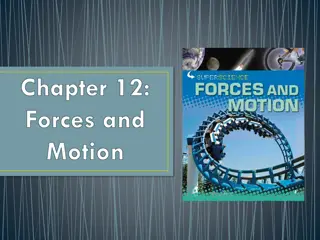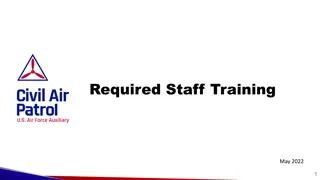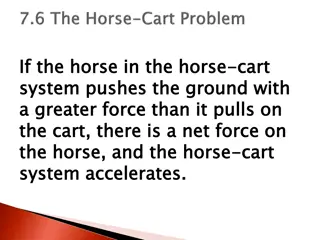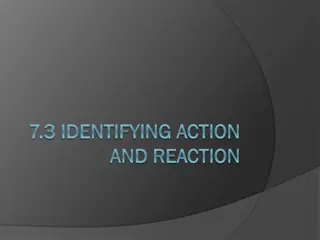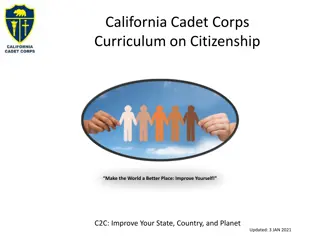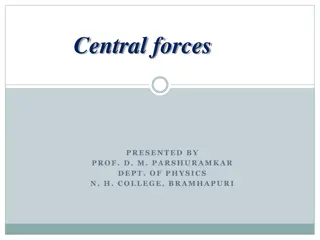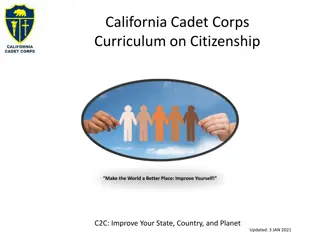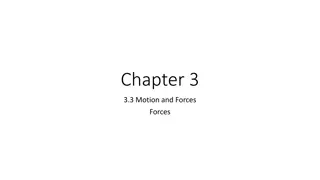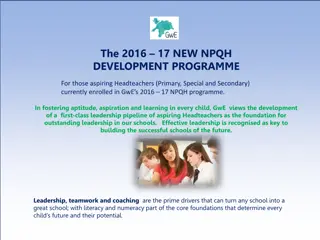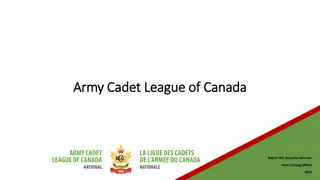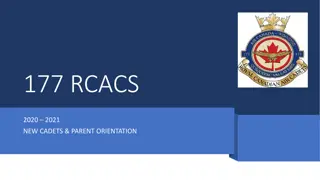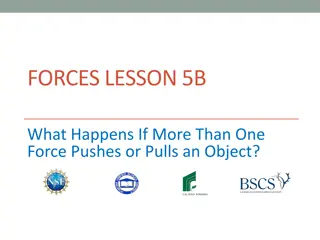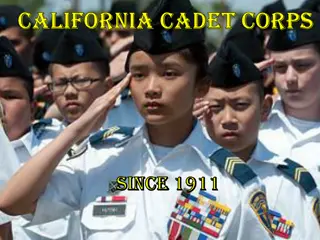Impact and ROI Analysis of Cadet Forces NI Headteachers Conference
This research project aims to measure the social and educational impact, as well as the return on investment of the Cadet Forces NI Headteachers Conference. It focuses on questions such as the social impact of UK (MoD) spending on Cadet Forces, benefits of qualifications provided by CVQO, and the impact of the Cadet Expansion Programme. Data is being collected through interviews, surveys, economic analysis, and data review, with a longitudinal project over four years. Initial findings indicate positive contributions to wellbeing, confidence, resilience, and independence skills for cadets in the Cadet Forces. The research emphasizes the importance of good evaluation and evidence-based approaches.
Download Presentation

Please find below an Image/Link to download the presentation.
The content on the website is provided AS IS for your information and personal use only. It may not be sold, licensed, or shared on other websites without obtaining consent from the author.If you encounter any issues during the download, it is possible that the publisher has removed the file from their server.
You are allowed to download the files provided on this website for personal or commercial use, subject to the condition that they are used lawfully. All files are the property of their respective owners.
The content on the website is provided AS IS for your information and personal use only. It may not be sold, licensed, or shared on other websites without obtaining consent from the author.
E N D
Presentation Transcript
Measuring the social and educational impact, and the return on investment of the Cadet Forces NI Headteachers conference 6-11-19 Prof. Simon Denny Dr Meanu Bajwa-Patel
Research questions What is the social impact resulting from the UK (MoD) spending c. 200 million p.a. on Cadet Forces (CF)? 1. What is the benefit of the qualifications provided by CVQO? 2. What is the social impact of the Cadet Expansion Programme (CEP) on the individuals who join the cadet units, their schools, the adult volunteer instructors, their local communities and wider society? 3. Longitudinal project over four years 9 months remaining
Using Standards of Evidence Strategic, evidence-led approaches can enhance and develop practice and maximise the efficacy of limited funds. Good evaluation is key to achieving this. Evaluation should be an integral part of any intervention, e.g. the CEP, because it is vital to be able to demonstrate the impact. HM Treasury require evidence of value for money!
Data collected Semi-structured interviews with over 620 cadets, CFAVs, parents, school staff and governors Self-completion on-line or paper survey cadets, CFAVs and Headteachers (n=5,451) Economic analysis using primary and secondary data to evaluate the social impact of the Cadet Forces on cadets and CFAVs Analysis of relevant databases Review of relevant literature Data gathering continuing to April 2020
Current headline findings - CCF The CEP programme is contributing positively to improvements in wellbeing, confidence, resilience and independence skills for the 42,700+ cadets in CCFs across the UK. Being in the CCF has a positive impact on the attendance and behaviour of many cadets. Improved attendance can lead to improvements in attainment. Some young people particularly benefit from a CCF. with SEND/EAL may
CCF data emerging themes Connectedness Resilience Confidence Independence Physical & mental wellbeing Improved attendance Freedom from bullying
Analysis of quantitative school data Data (attendance, SEND, EAL, PPF, eFSM, gender) shared by CEP schools suggests that being in the CCF improves student attendance. The highest impact is on disadvantaged students, i.e. those in receipt of PPF and those eFSM, in relation to the social impact of the CF this an important finding. DfE data shows that, for students (with the same prior attainment and characteristics) each session increase in overall absence figures, across Key Stage 4, there is a 1.8% reduction in their chances of achieving five 9-5 grades/or equivalent.
Impact of improved attendance Each extra day missed in Key Stage 4 was associated with a lower attainment outcome. If being a cadet means some students improve their attendance then their attainment will improve. If these students are disadvantaged, i.e. eFSM or in receipt of the PPF then the impact will be greater. Data from the Education Endowment Fund shows that the attainment gap is greatest for disadvantaged students (and those with SEND). Majority of 19 year olds who have been eFSMleave education without good level English and Maths qualifications. Lifetime cost of being NEET = 370,000 (IPPR)
Quantifying the impact Even moderate improvements in GCSE attainment can lead to significant increases in economic benefits to society. Lack of progress in addressing the attainment gap and social mobility in general = significant cost for taxpayers. Sutton Trust report showed that even a modest improvement in social mobility could lead to an increase in the UK economy of 2% or 39 billion. ISII analysis suggests that CCFs could be part of the solution to the attainment gap and help improve social mobility across the UK. Huge ROI potential.
Analysis of qualitative school data Impact is seen across a number of levels: resilience, confidence, independence, physical & mental wellbeing and freedom from bullying CCF s provide connectedness which has a significant positive impact on the cadets. Action for Children report (2017) highlighted how 80% of adolescents report feelings of loneliness at some time and 33% describe these feelings as persistent and painful. A lack of closeness, trust and a sense of belonging can combine to cause chronic loneliness, which can lead to poor mental and physical health outcomes and lower academic attainment.
Cadet from a CEP school CCF I really enjoy school but since I came up [ranks] and learnt about the responsibilities of being a non- commissioned officer, my discipline in school and attention span and everything increased and I think it really, really benefitted me doing GCSEs and that type of thing; it really helped with behavioural and pastoral issues within school. And it just helped in general with life in school. helped me build confidence with friends, helped maintain friendships and keep them the way I wanted them so that it was actual socialising.
Cadet from a CEP school CCF Cadets is easily my favourite subject and without the teachers it would not be possible. Cadet means so much to me as there is a lot of pressure placed on our shoulders for exams etc. But when I got into Cadets the environment is always so chilled and we still get the work completed to a high standard. For me, Cadets is one of the only lessons I can go into and not have to stress or panic, we can all relax, do the work while having a laugh, a joke and general chit chat with the staff. Without CCF I wouldn t have gotten to complete my Bronze Duke of Edinburgh s, and I m in the middle of learning to become an ocean diver.
Adult volunteer from CEP school CCF Becausethey re maybe not lifted out of their comfort zone enough. I think young people get too much time to dwell on their own issues and their own problems and they need to be out there getting fresh air, getting exercise There s tremendous pressure on our young people and I know our school Detachment suffers because of the impact of exams and academic qualifications and the pressure from parents, the pressure from themselves to do well, to achieve. So the pressure is on and I think to come away and escape for a weekend here is great.
Teacher and CCF Officer in CEP school I started in the September and it gives me something else to do that isn t just teaching. It s teaching but I m developing skills I didn t have and I see the impact on the kids and what is happening to their self-esteem, their confidence, their leadership skills, their being able to think slightly outside the box and the resilience they ve got to actually face the challenges.
What difference can a CCF make? For some young people the sense of belonging achievement that they get from being part of the CCF is invaluable. It can make them want to come to school and help them make friends and build their resilience and confidence. It gives some opportunities that they would never otherwise have. and students
Is there a ROI? Engagement in culture/heritage and sport are associated with increases in wellbeing, improvements in health, improved educational and economic prospects, and higher levels of positive civic participation (Fujiwara* et al, 2015) Allowing for cadet churn and levels of participation, so 25,400 cadets p.a.: Reduction in GP visits 452,286 Reduction in use of mental health services 607,314 Total savings to NHS p.a. = 1,059,600 Lifetime private benefits from their increased likelihood of attending FE/HE of 62,611,000 lifetime public benefits in increased tax receipts from their increased likelihood of attending FE/HE of 20,792,948 Total = c. 83 million p.a. *ex-senior economist at Cabinet Office, lead on cost-benefit analysis at DWP, now at LSE
Is there an ROI? Value of Adult Volunteering Simple model minimum wage (Community Works): multiply CFAV hours x minimum wage Total = c. 91 million p.a. Sophisticated model life satisfaction (Fujiwara et al 2013): frequent volunteers (i.e. CFAVs) gain 16,335 of benefit p.a. Total = c. 453 million p.a. Conclusion: the value of the time, energy and effort CFAVs put into the Cadet Forces is a very large number indeed P.S. 97% of CFAVs that are teachers, social workers or in the police believe that participation in the Cadet Forces is particularly beneficial for disadvantaged youngsters
Big numbers, small number, big number 200,000,000 = cost of Cadet Forces p.a. 370,000 = lifetime cost of exclusions (IPPR 2017) 542 = annual number of young people the Cadet Forces has to change life outcomes for to cover annual cost of Cadet Forces 128,000 = number of cadets in April 2019 Conclusion of study: Expenditure of tax payers money on the Cadet Forces represents an excellent use of money and results in a very significantly positive return on investment
Selected references https://www.actionforchildren.org.uk/media/9724/action_f or_children_it_starts_with_hello_report__november_2017_l owres.pdf Margalit, M. (2010) Lonely Children and Adolescents: Self Perceptions, Social Exclusion and Hope. New York: Springer. DfE (2018) Permanent and Fixed Period Exclusions in England: 2016 to 2017. Available online at: https://assets.publishing.service.gov.uk/government/uploa ds/system/uploads/attachment_data/file/726741/text_exc 1617.pdf Gill K. (2017) Making the Difference: Breaking the link between school exclusion and social exclusion, IPPR. Available online at: https://www.ippr.org/files/2017- 10/making-the-difference-report-october-2017.pdf Gutman, L. M. & Vorhaus, J. (2012) The impact of pupil behaviour and wellbeing on educational outcomes. DfE.
Any questions? meanu.bajwa-patel@northampton.ac.uk dennysj12@gmail.com


